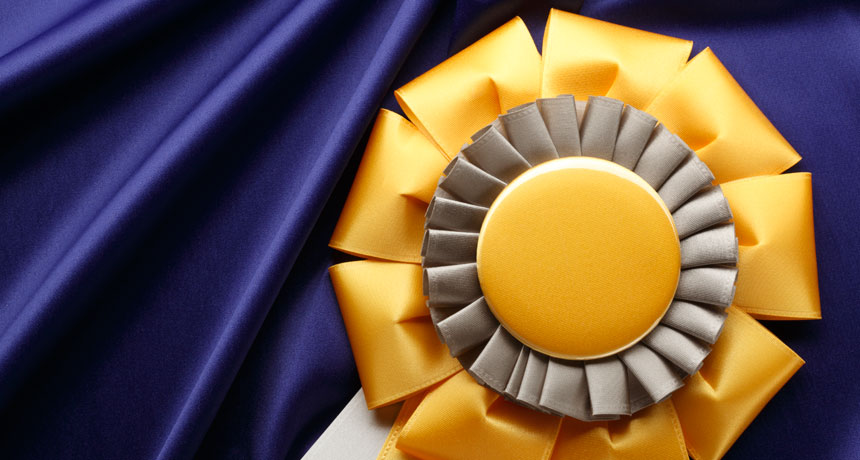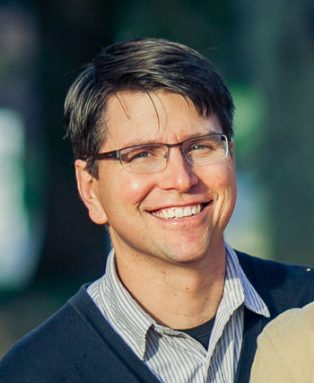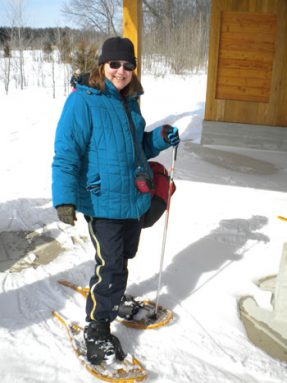Two SNS writers win big
Stephen Ornes and Kathiann Kowalski receive awards

Two journalists — Stephen Ornes and Kathiann Kowalski — have just been honored for their stories in Science News for Students. One story focused on the science of lightning, the other on how Mother Nature recycles the dead into food for the living.
iStockPhoto
Share this:
- Share via email (Opens in new window) Email
- Click to share on Facebook (Opens in new window) Facebook
- Click to share on X (Opens in new window) X
- Click to share on Pinterest (Opens in new window) Pinterest
- Click to share on Reddit (Opens in new window) Reddit
- Share to Google Classroom (Opens in new window) Google Classroom
- Click to print (Opens in new window) Print
By Janet Raloff
Readers of Science News for Students should be quite familiar with Stephen Ornes. For more than seven years, week in and week out, he has written stories on a broad range of topics. Last year, I asked him to write a longer piece — what we call a feature story — on lightning. What do we know about this force of nature? More importantly, what aspects remain a mystery? Ornes turned in a story that I thought was truly great. But you don’t have to trust my judgment.
Today, the American Association for the Advancement of Science announced that this story — “Where will lightning strike?”— was an example of remarkable science journalism. Indeed, it has just won first place, a gold award, in the Children’s Science News category of the 2015 AAAS Kavli Science Journalism Awards.

As the story opens, we are introduced to two boys and their older sister. They’re hiking in California’s Sequoia National Park. Suddenly the weather changes. Lightning strikes the youngest sibling. He is badly burned, with smoke issuing from his back. But another climber was less lucky: He was struck — and killed.
“Reporting this story made me more cautious when thunder roars,” says Ornes. “I hope it had the same effect on my readers.” But it was also “fun to report and write,” he says, “because — like almost every story I write — I got to talk to scientists who have great ideas, ask great questions and conduct interesting experiments.”
Ornes will pick up his award, which includes a check for $5,000, at the AAAS meeting next February in Washington, D.C.
It’s not just adult journalists who have prized Ornes’ work. Since his story on lightning ran in September 2014, more than 33,000 of you have read it. Over that period, only 9 stories have done better in terms of popularity — and a third of them were also written by Ornes. (They include his stories on 3-D printed cars and starting school too early, which another of his stories showed can turn kids into “zombies.”)
Some of his more recent pieces have focused on foods being developed to feed people in the future, the advantages of 4-D printing and why retractions in science are a good thing. If you missed any of these stories, there’s no time like the present to check them out.
Rewarded for investigating rot
Another story on that top 10 list is a feature by Kathiann Kowalski: “Recycling the dead.” It explains how Mother Nature breaks down the bodies of organisms, large and small. By extracting the building blocks of those once-living plants, animals, fungi and more, nature keeps our planet from being overrun by wastes. Instead, the dead get turned into food for the living.

On October 24, the Ohio Chapter of the Society of Professional Journalists awarded Kowalski first place for this story. And it wasn’t in a category limited to writing for tweens and teens. It was for overall journalistic excellence in online science writing.
Kowalski, too, has been quite popular with you readers. For instance, her news report on the potential addictiveness of cell phones topped that top-10 list mentioned earlier. More than 59,000 have given it a read.
Several of her recent stories are proving hits as well. They have explored topics ranging from careers in cow science to using light to turn on parts of the brain to new approaches to fighting flu. In a week or so, we’ll be posting another story by her on wildlife forensics — using environmental DNA to track down fish, snakes and other species hiding in the wild.
On behalf of everyone at this magazine, we wish hearty congratulations to both writers for this well-deserved recognition of their fine reporting and writing.
Power Words
(for more about Power Words, click here)
addiction The uncontrolled use of a habit-forming drug or uncontrolled and unhealthy habit (such as video game playing or phone texting). It results from an illness triggered by brain changes that occur after using some drugs or engaging in some extremely pleasurable activities.
climate change Long-term, significant change in the climate of Earth. It can happen naturally or in response to human activities, including the burning of fossil fuels and clearing of forests.
decay The process (also called “rotting”) by which a dead plant or animal gradually breaks down as it is consumed by bacteria and other microbes.
environmental DNA (also eDNA) A tool for detecting the presence of a species solely from the genetic material (DNA) it has left in the environment.
four-dimensional printing (also 4-D printing) Using a printer to create a solid object that can respond to its environment.
fungus (plural: fungi) One of a group of single- or multiple-celled organisms that reproduce via spores and feed on living or decaying organic matter. Examples include mold, yeasts and mushrooms.
influenza (or flu) A highly contagious viral infection of the respiratory passages causing fever and severe aching. It often occurs as an epidemic.
organism Any living thing, from elephants and plants to bacteria and other types of single-celled life.
physics The scientific study of the nature and properties of matter and energy. Classical physics is an explanation of the nature and properties of matter and energy that relies on descriptions such as Newton’s laws of motion. Quantum physics, a field of study which emerged later, is a more accurate way of explaining the motions and behavior of matter. A scientist who works in that field is known as a physicist.
recycle To find new uses for something — or parts of something — that might otherwise be discarded, or treated as waste.
three-dimensional (3-D) printing The creation of a three-dimensional object with a machine that follows instructions from a computer program. The computer tells the printer where to lay down successive layers of some raw material, which can be plastic, metals, food or even living cells. 3-D printing is also called additive manufacturing.







